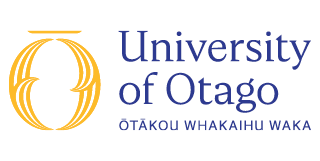Overview
The structural and functional organisation of the human body at cellular, tissue, system and regional levels.
ANAT 241 provides a structured introduction to modern anatomy and cell biology by giving a hierarchical description of the human body, spanning cells and tissues through to systems and regional anatomy. Topical examples are used to illustrate each hierarchical level.
About this paper
| Paper title | Human Biology: Cells to Systems |
|---|---|
| Subject | Anatomy |
| EFTS | 0.15 |
| Points | 18 points |
| Teaching period | Semester 1 (On campus) |
| Domestic Tuition Fees ( NZD ) | $1,173.30 |
| International Tuition Fees | Tuition Fees for international students are elsewhere on this website. |
- Prerequisite
- CELS 191, CHEM 191, (HUBS 191 or PTWY 131) and 18 further 100-level points
- Restriction
- MELS 241
- Schedule C
- Science
- Contact
Anatomy Office
Room 231, 2nd Floor
Lindo Ferguson Building (LFB)
Tel 479 7362
anat241.admin@otago.ac.nz- More information link
- View more information on the structure of the Anatomy major
- Teaching staff
2024 teaching staff to be confirmed. Please contact the Department for more information.
- Paper Structure
Module 1: Cell Structure and Function
Module 2: Cells in Tissues
Module 3: The Musculoskeletal System
Module 4: Regional Anatomy of the Thorax- Teaching Arrangements
- All teaching is undertaken on campus.
- Textbooks
Marieb and Hoehn 'Human Anatomy and Physiology' (10th ed.; Pearson/Benjamin Cummings)
Young, Lowe, Stevens and Heath 'Wheater's Functional Histology: A Text and Colour Atlas' (6th ed.; Churchill Livingstone/Elsevier)- Graduate Attributes Emphasised
- Interdisciplinary perspective, Lifelong learning, Scholarship, Communication, Critical thinking, Ethics, Information literacy, Research, Self-motivation, Teamwork.
View more information about Otago's graduate attributes - Learning Outcomes
Students who successfully complete this paper will have:
- Knowledge of and ability to identify cellular organelles and structures and an understanding of their function and importance to selected research examples
- An understanding of the relationship between cellular structure and function, the interactions of cells at the molecular level and their organisation into tissues and organs to meet specific structural and functional demands
- Knowledge of the main body tissues and the skills to identify their normal histological features
- An understanding of the structure and function of the human skeleton, with detailed coverage of musculature and joint anatomy in selected regions of the musculo-skeletal system
- An understanding of how various tissues and organs are organised in the thoracic region
